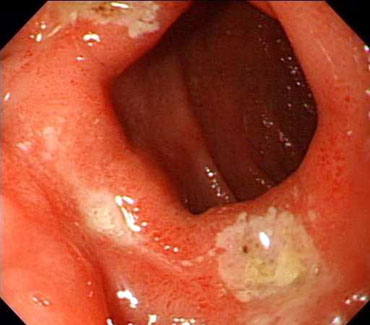
Introduction to
Duodenal Ulcer
A duodenal ulcer is an open sore in the lining of the duodenum, the first part of the small intestine, that lies immediately distal (after) the stomach. The broad term for ulceration in the stomach or duodenal lining is peptic ulcer disease. Most of the causes of stomach ulcers are also responsible for the development of duodenal ulcers.
The duodenum has an inner epithelial lining, known as the mucosa. It is made up of simple columnar cells and also contains specialized cells that produce mucus and a few digestive enzymes. With duodenal ulcers, the mucosa is eroded revealing the underlying layers like the submucosa and in severe cases, an ulcer may perforate the duodenal wall. Duodenal ulcers are more common than stomach ulcers and are usually a solitary (single) ulcer. The ulcer usually forms close to the pyloric valve and more often occurs on the anterior duodenal wall.
The duodenum has its own protective mechanisms against gastric acid in addition to a mucus barrier like the stomach. When acidity is detected in the duodenum, the pancreatic ducts secrete a combination of water and bicarbonate ions to neutralize the gastric acid in the duodenum. Digestive hormones like secretin are also released into the blood stream to slow down gastric emptying thereby allowing the duodenum to cope with smaller quantities of gastric acid. The epithelial cells can also actively pump out hydrogen ions from the duodenal lumen, further reducing the acid content.